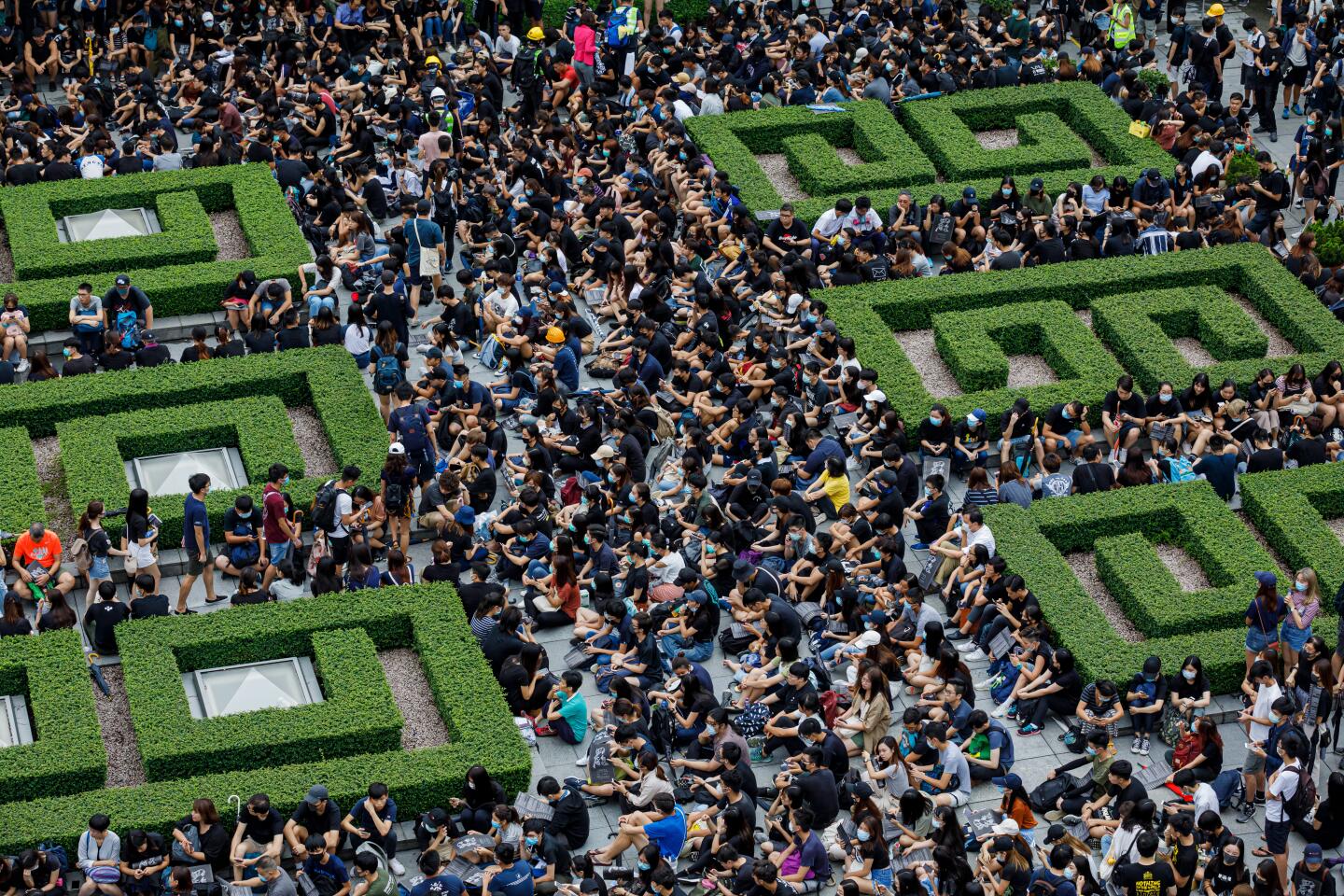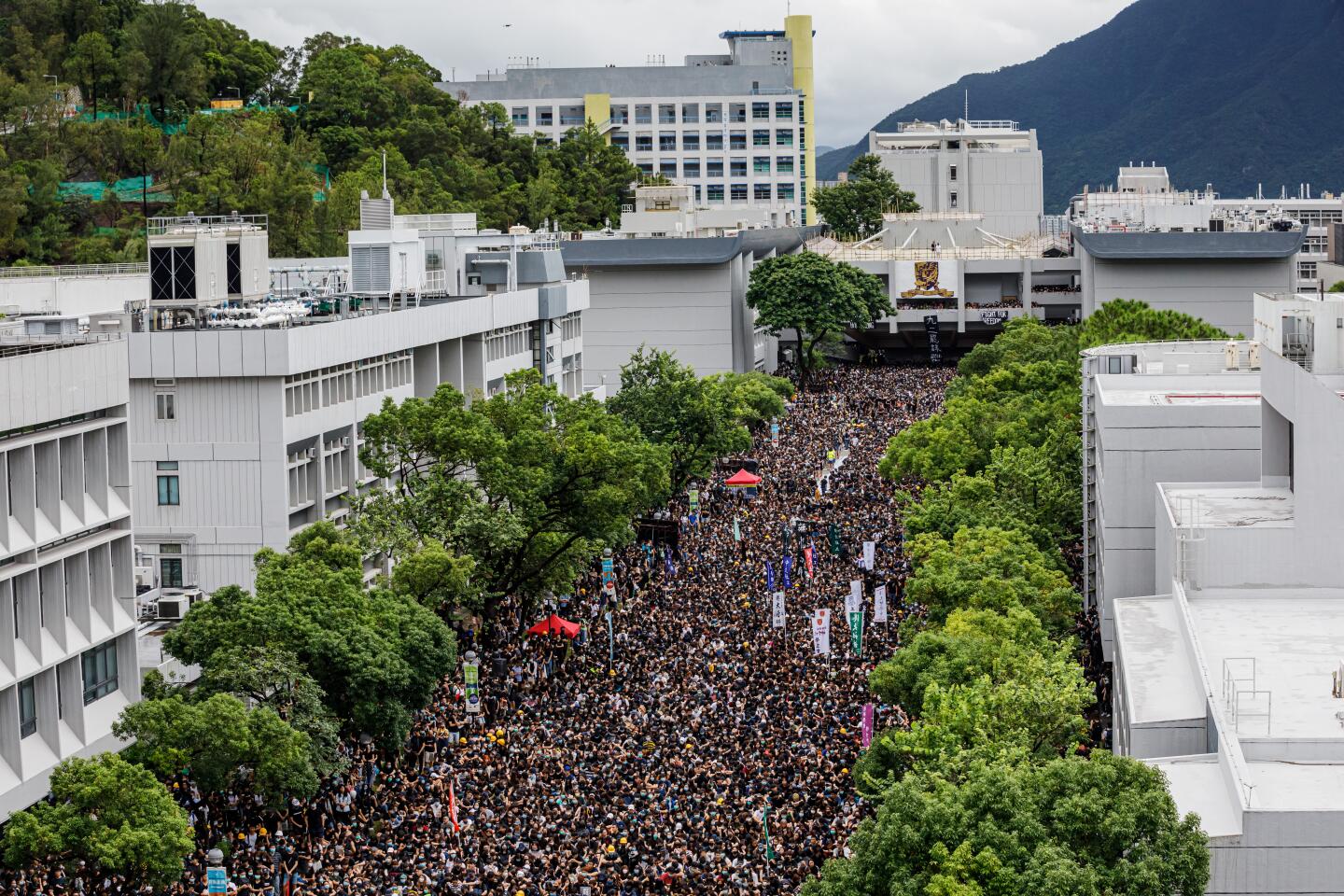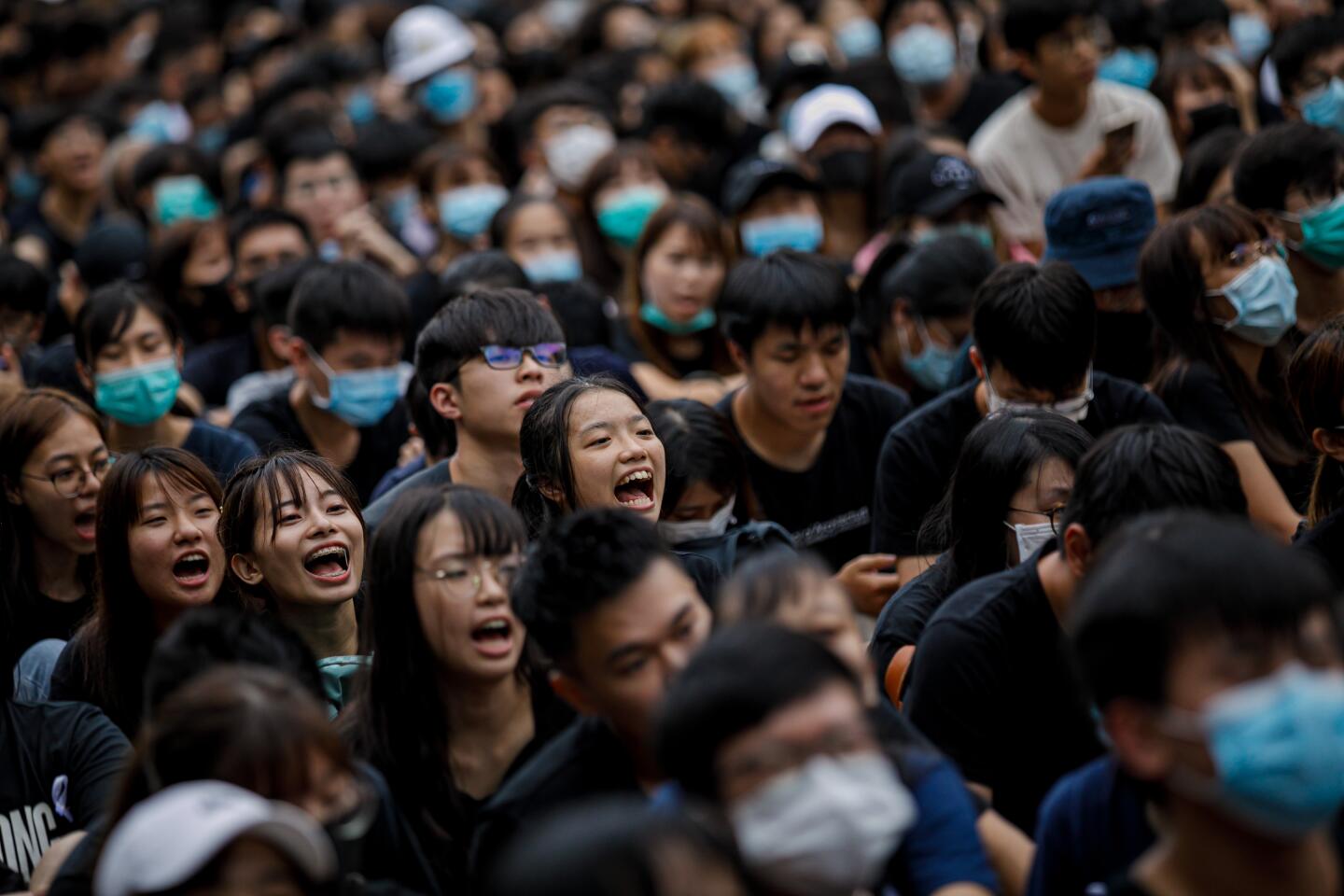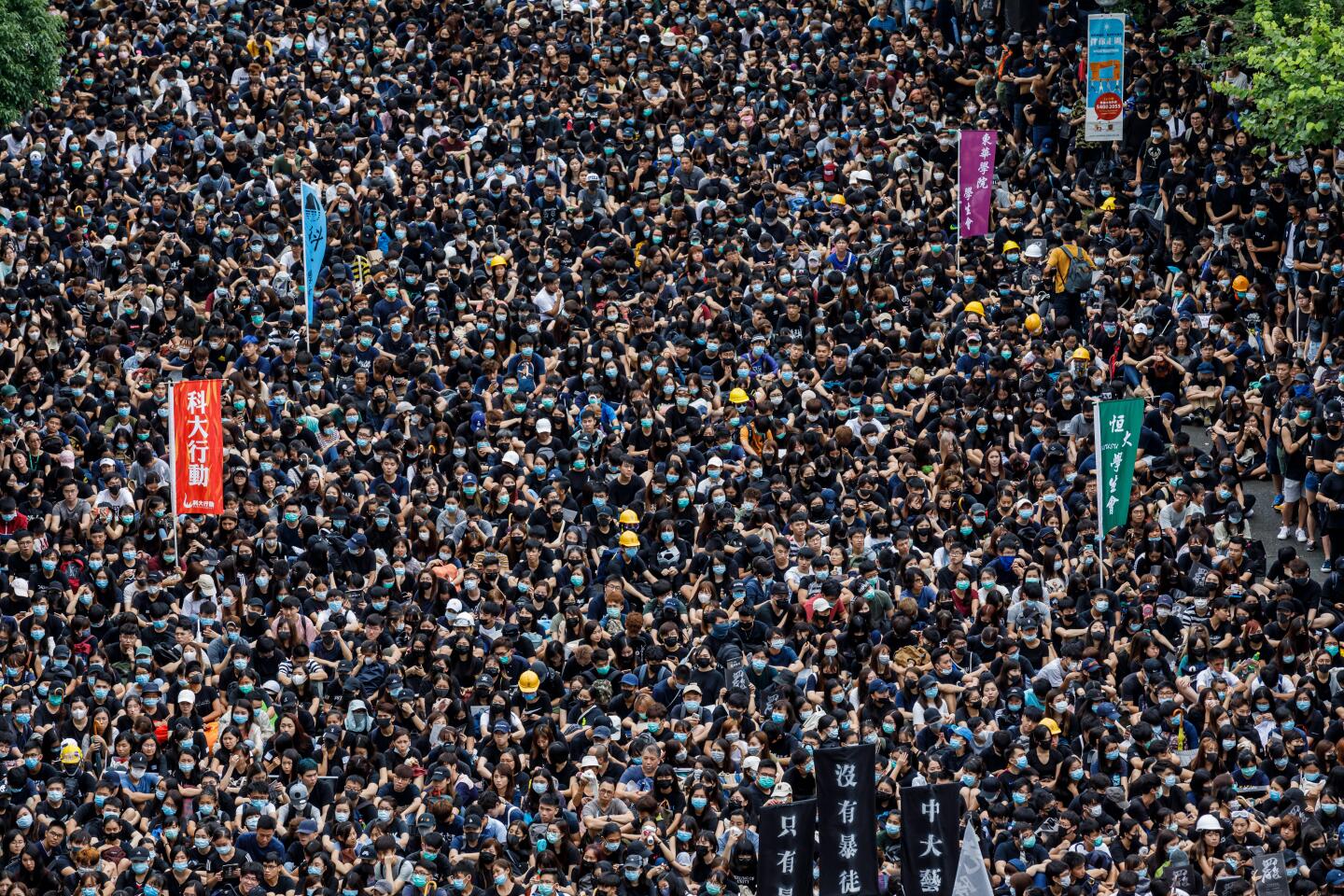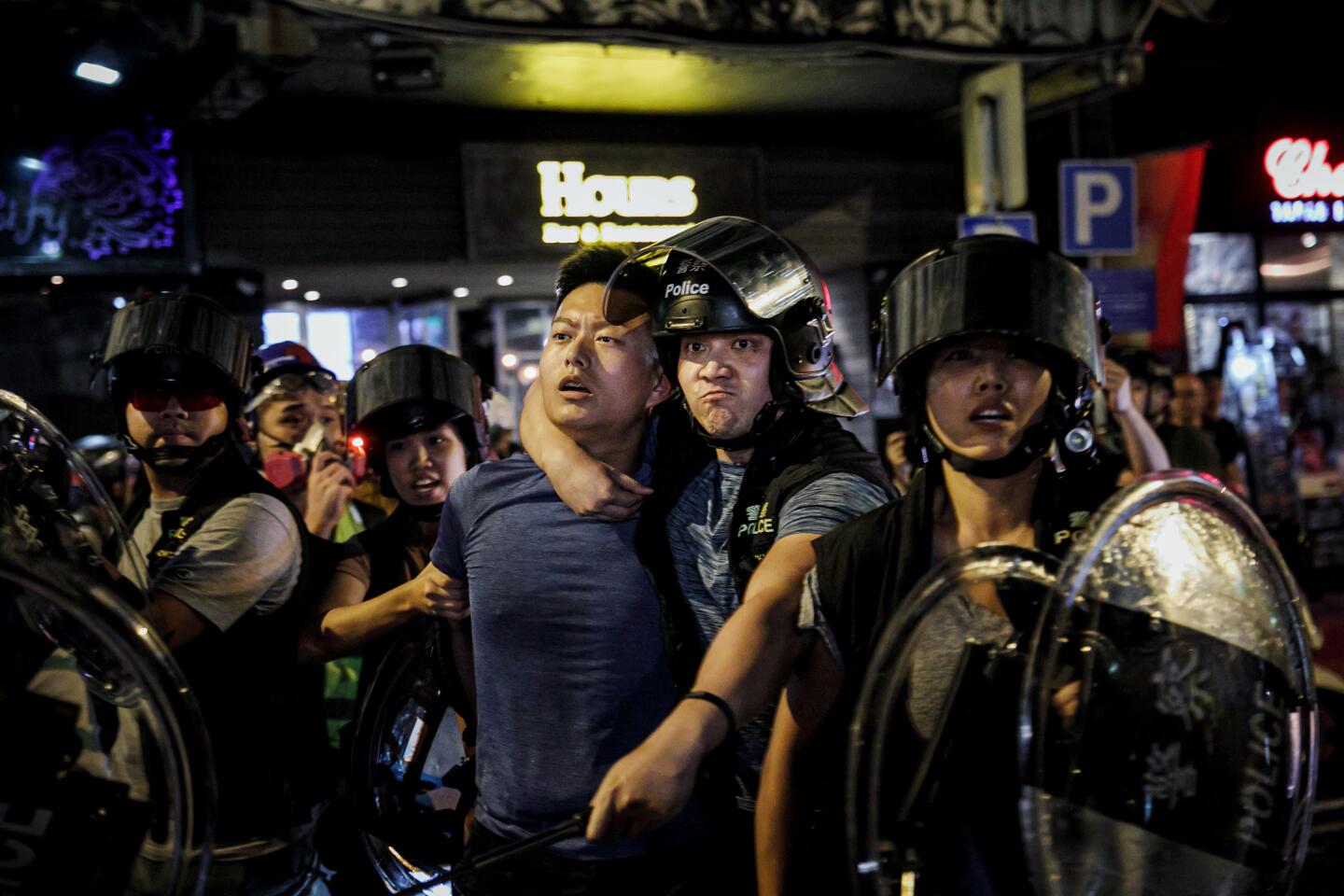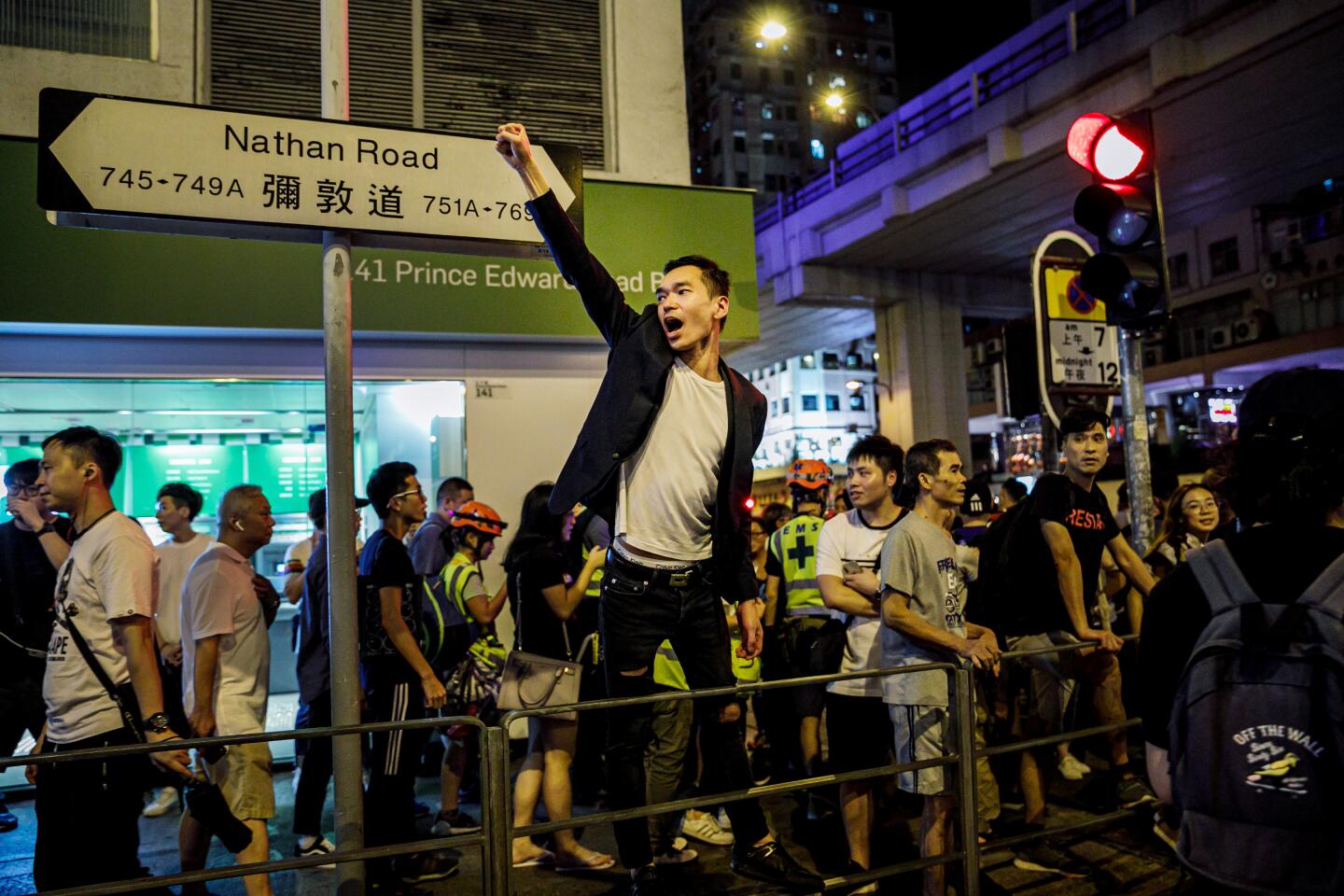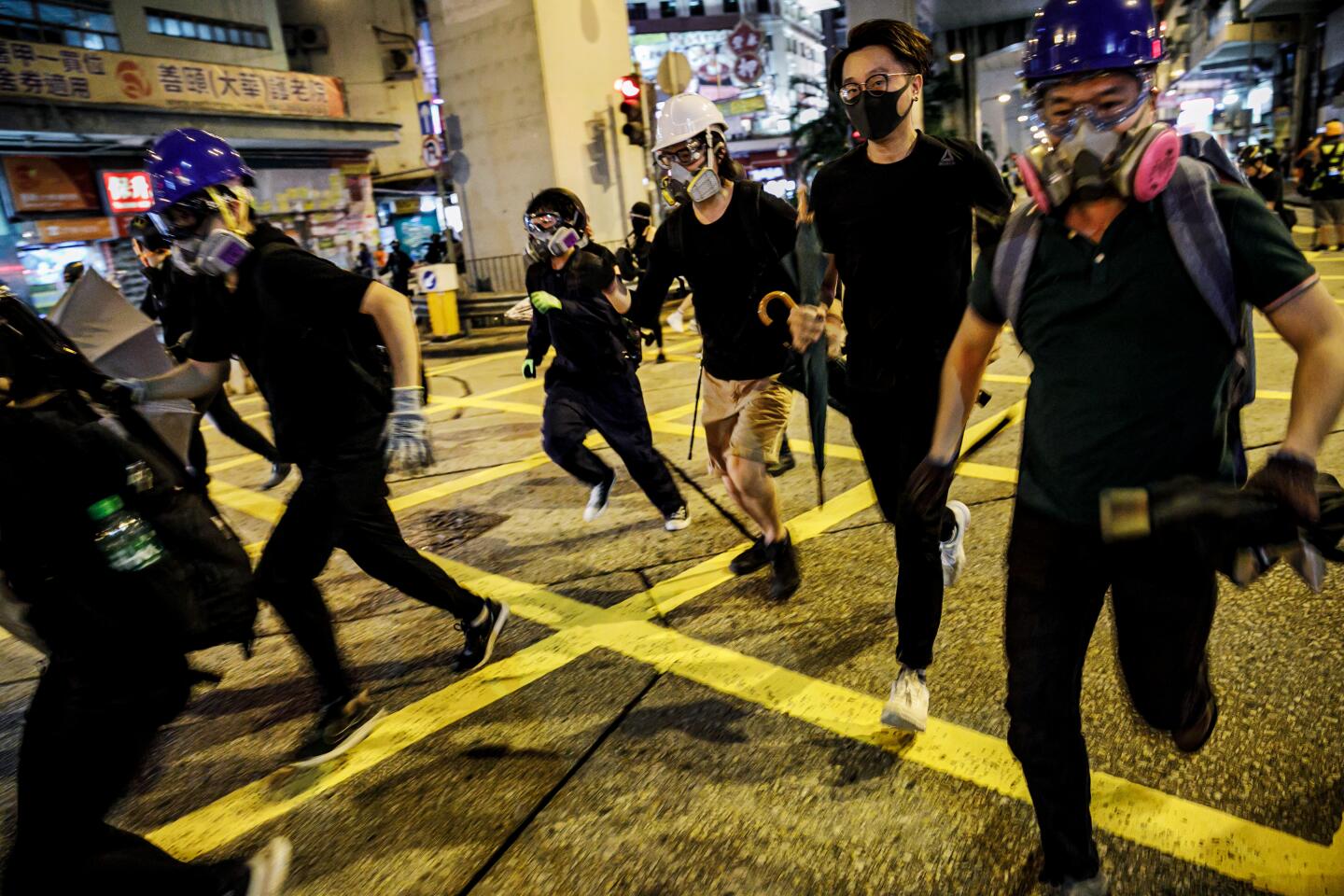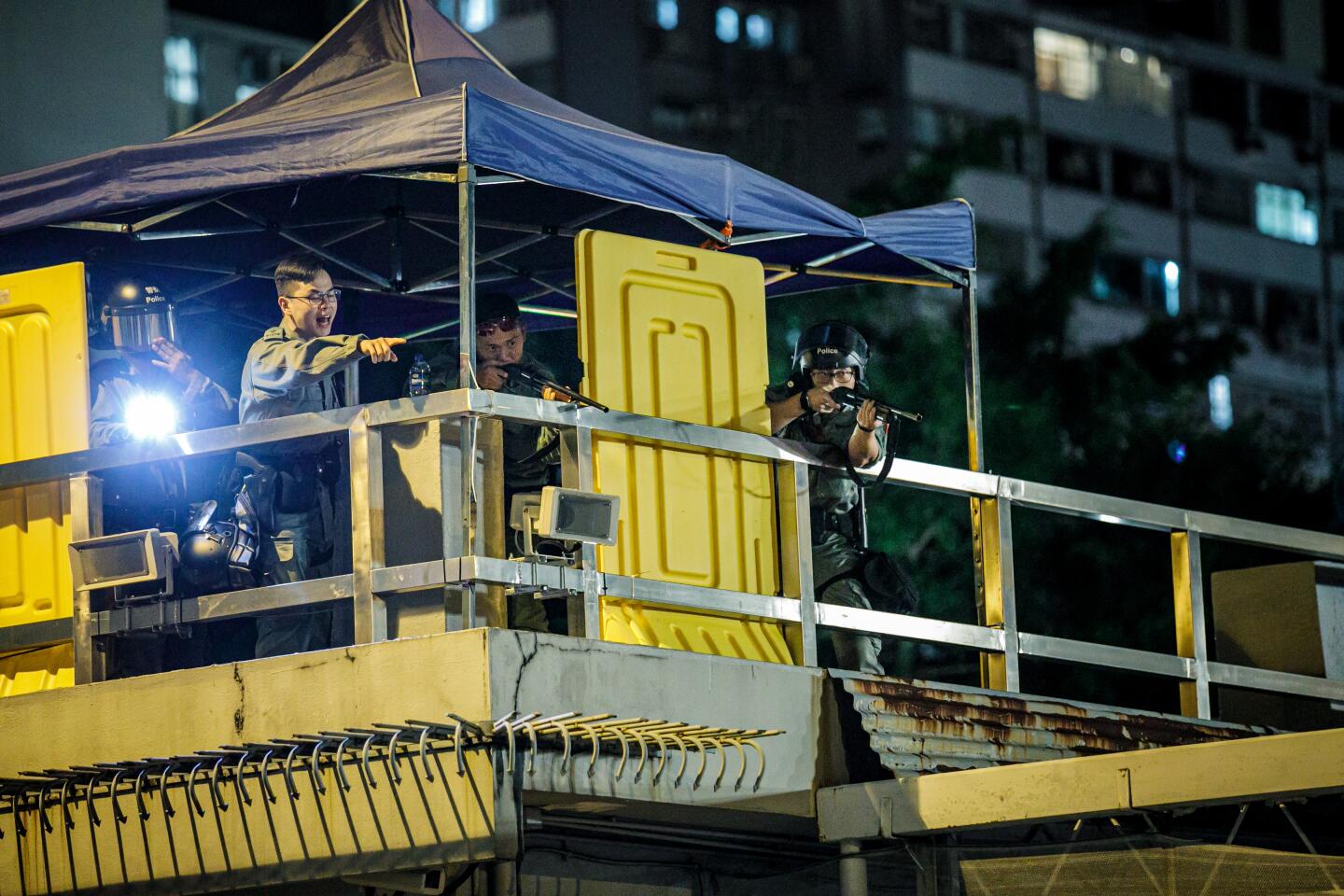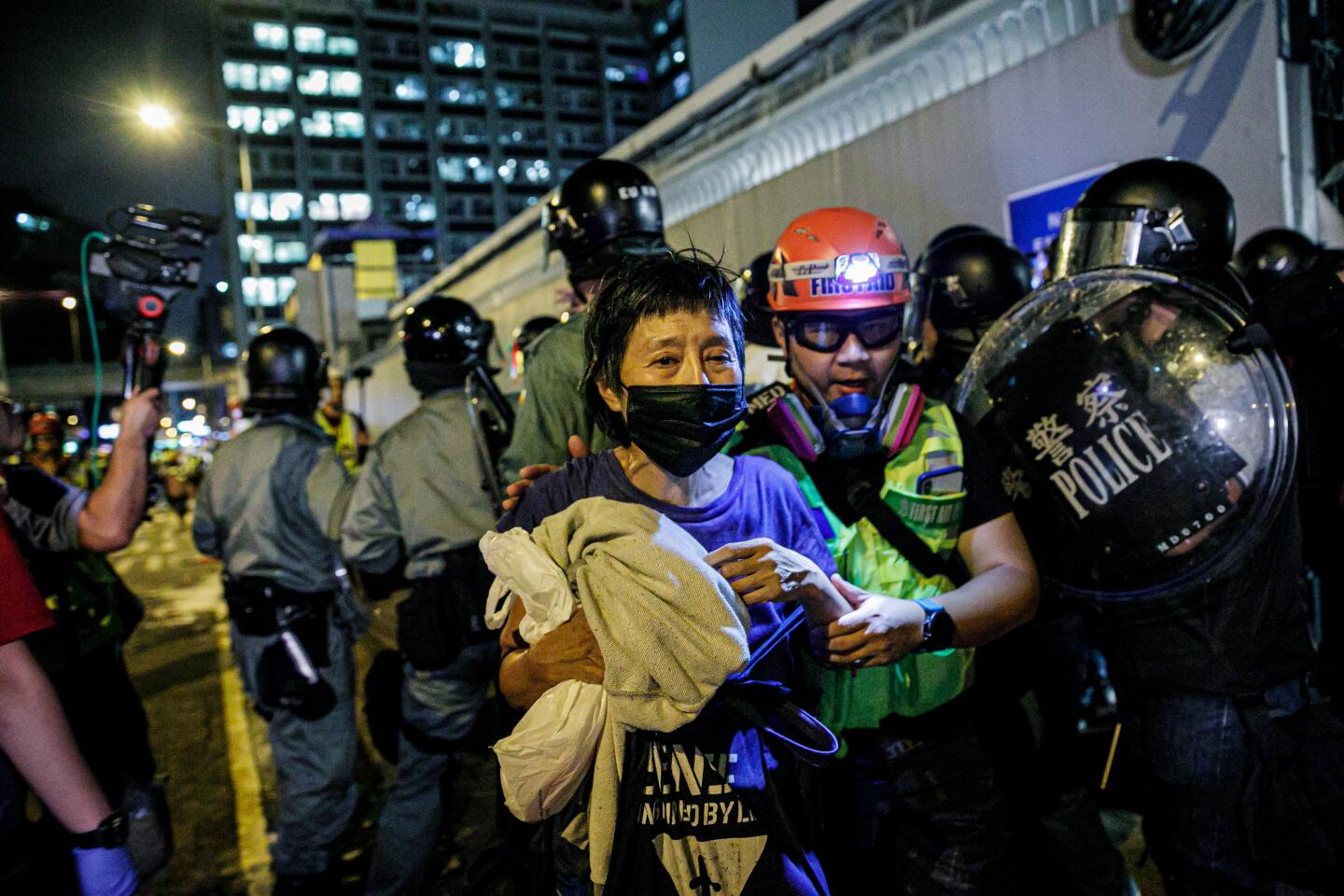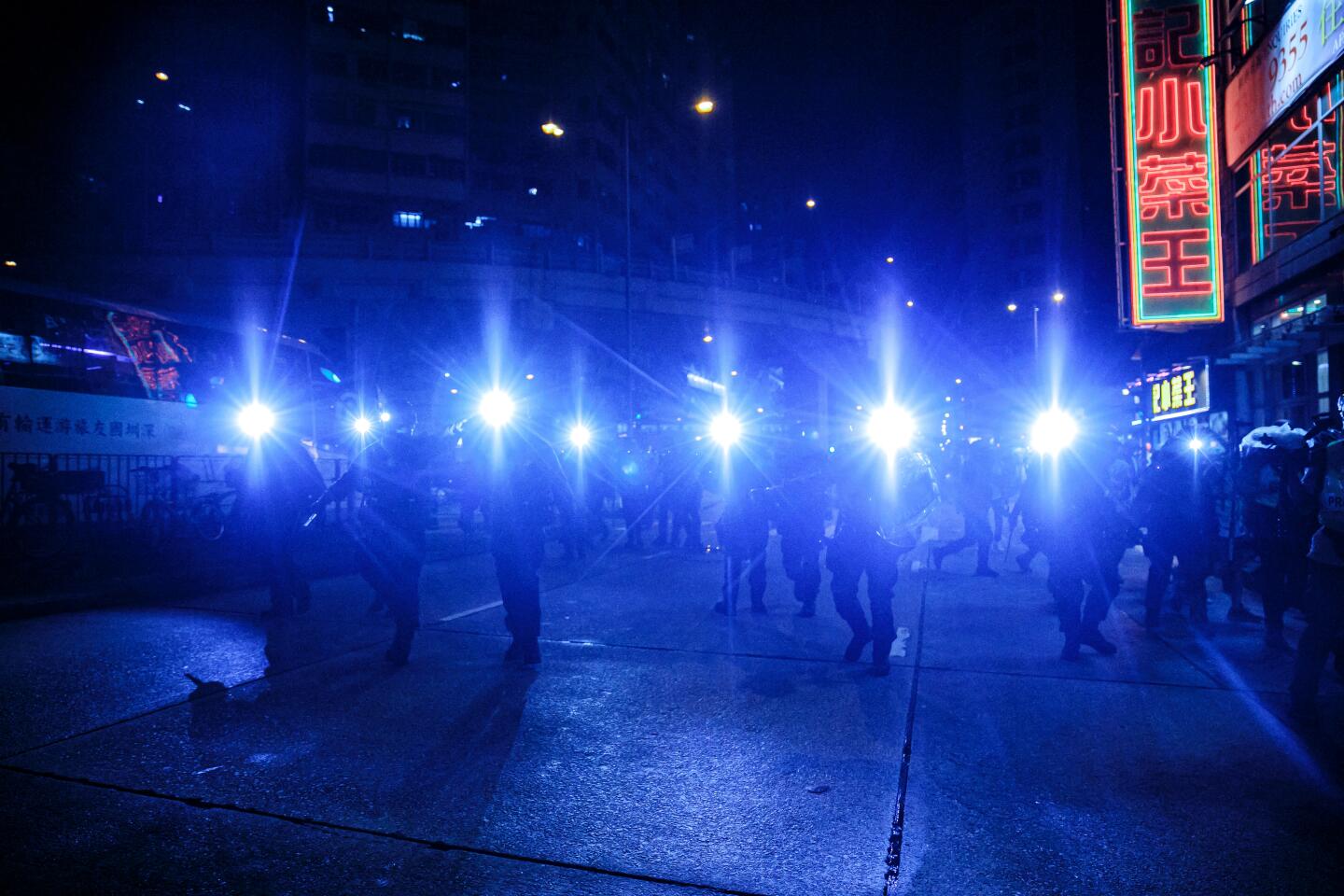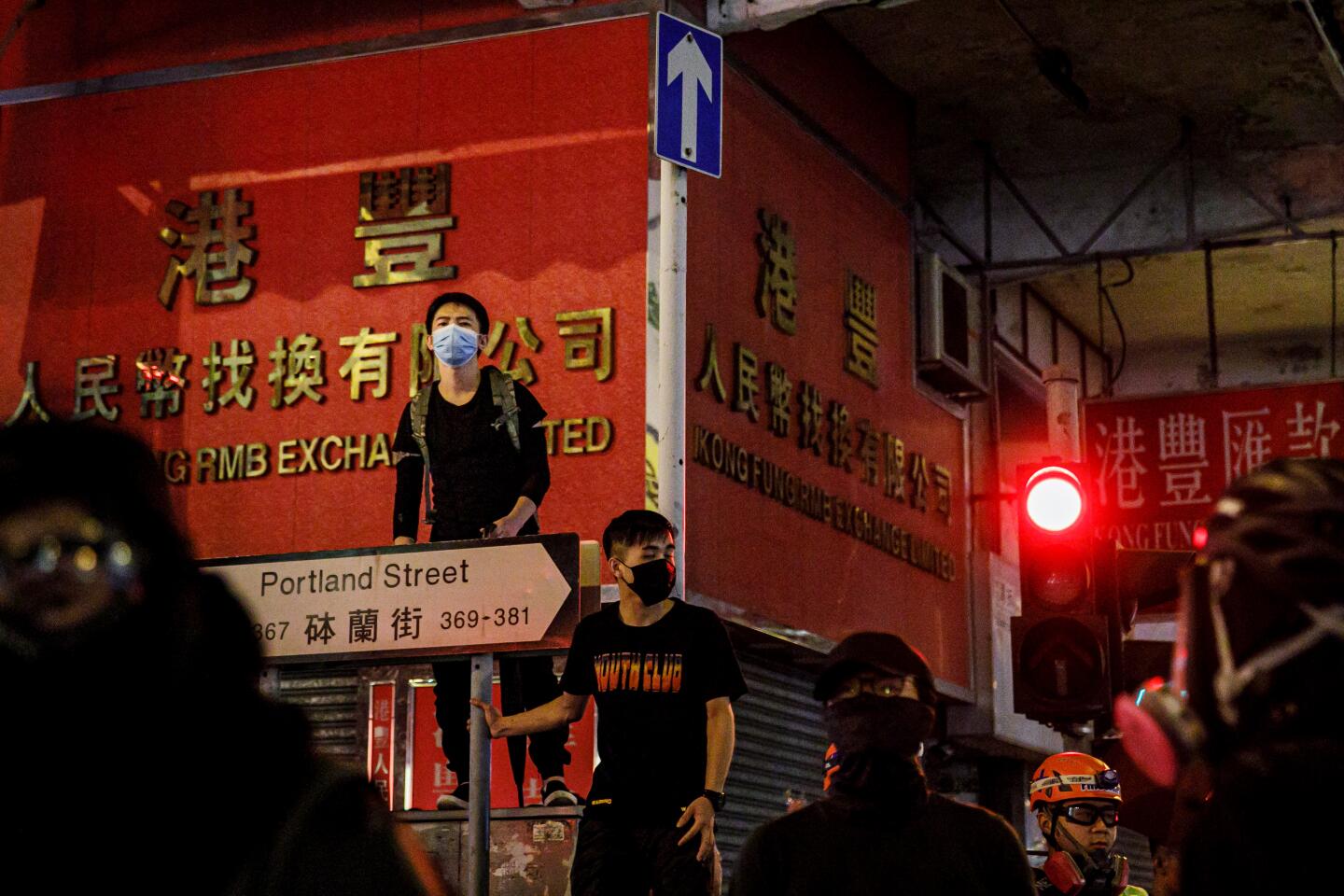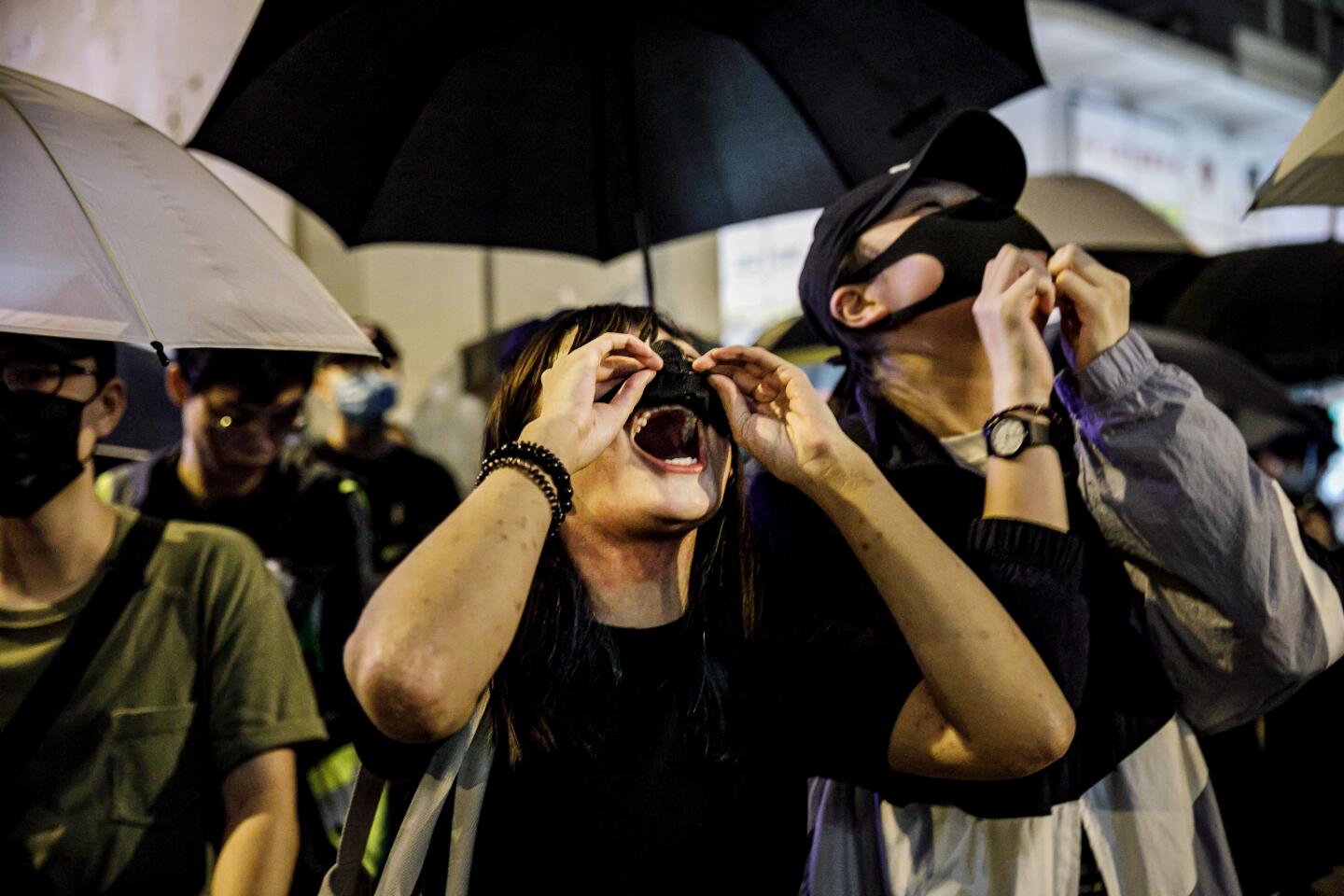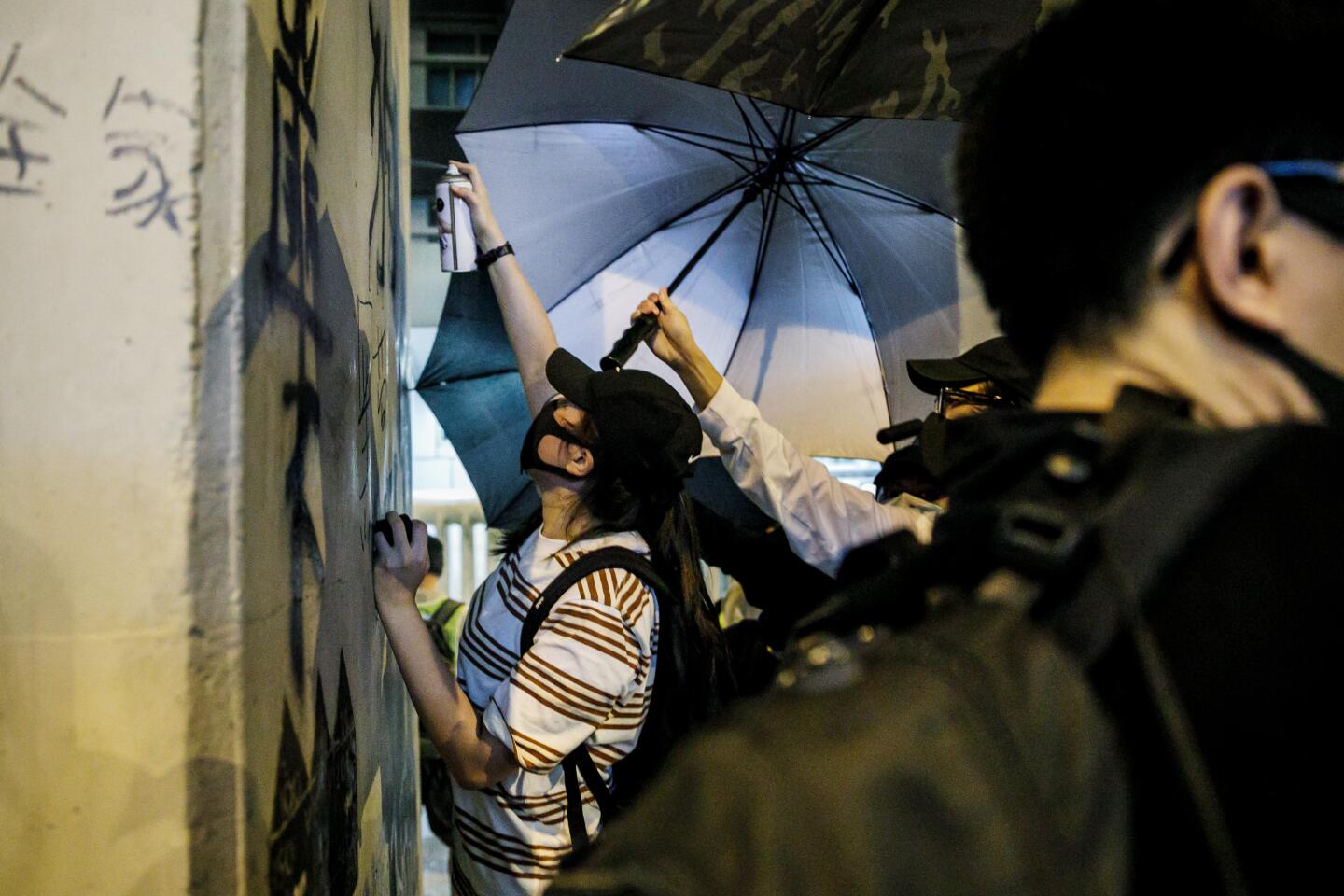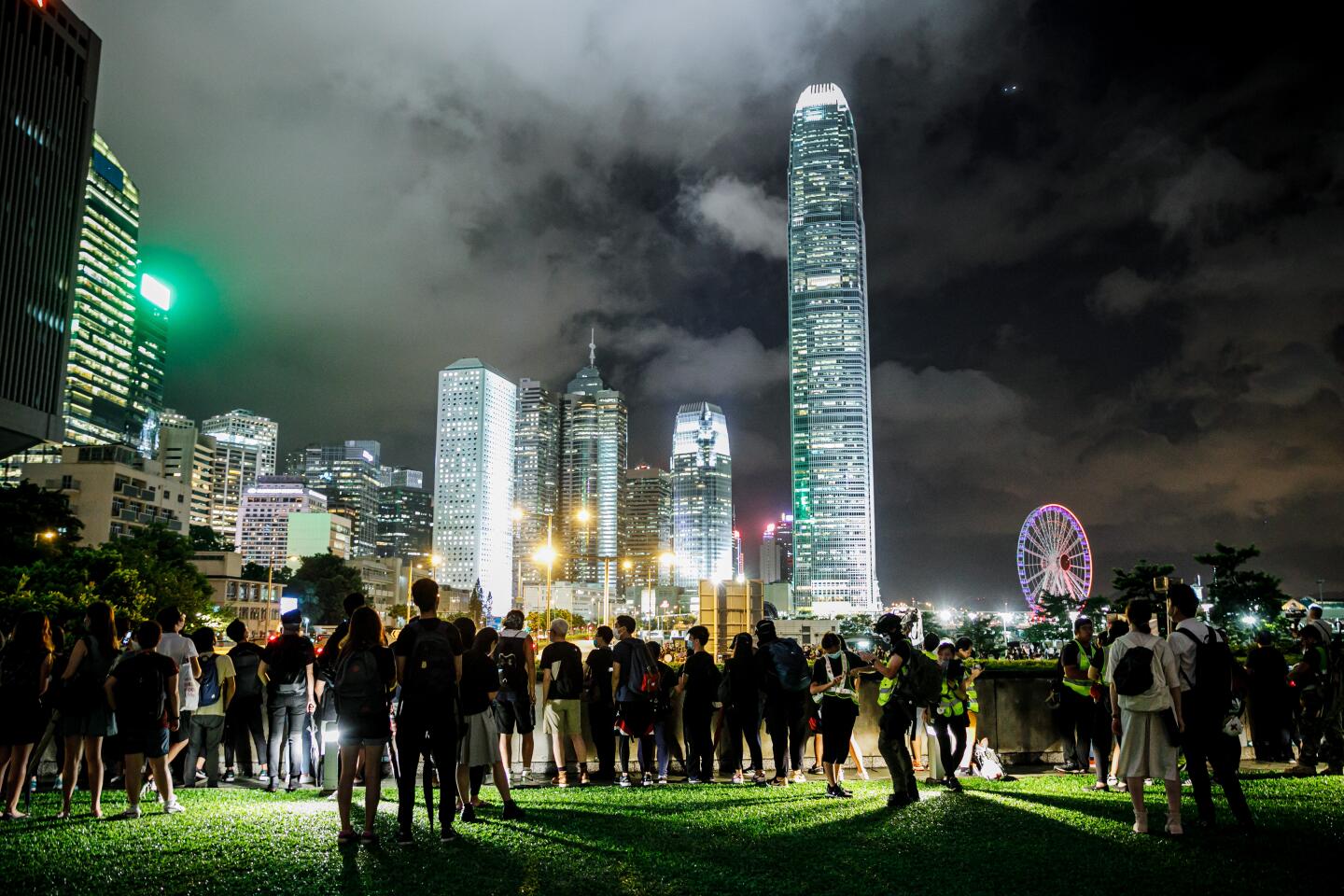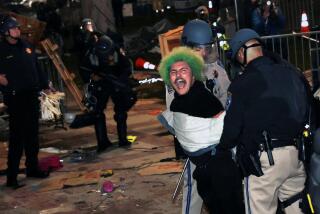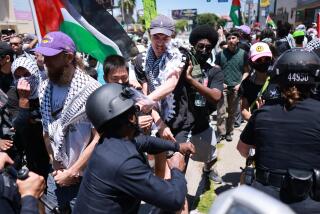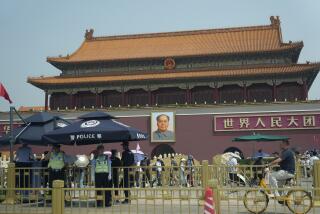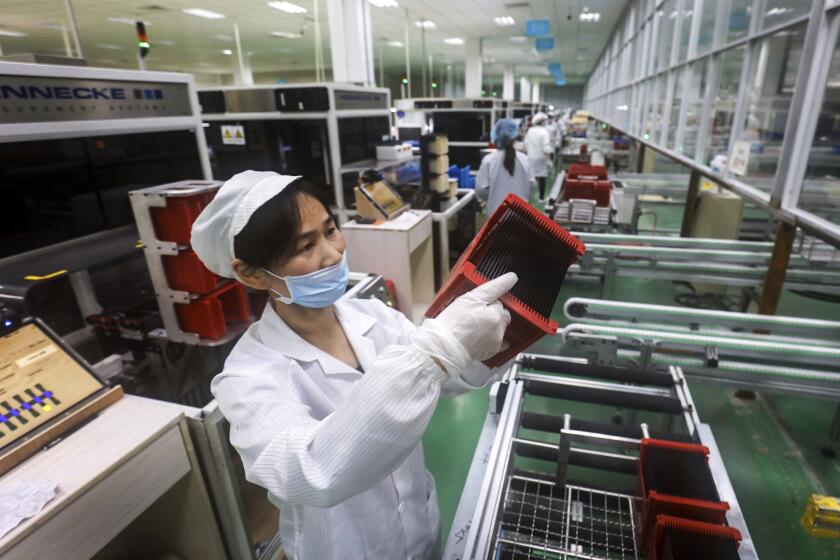‘I thought I was about to die’: Eyewitnesses describe brutal beatings by Hong Kong police
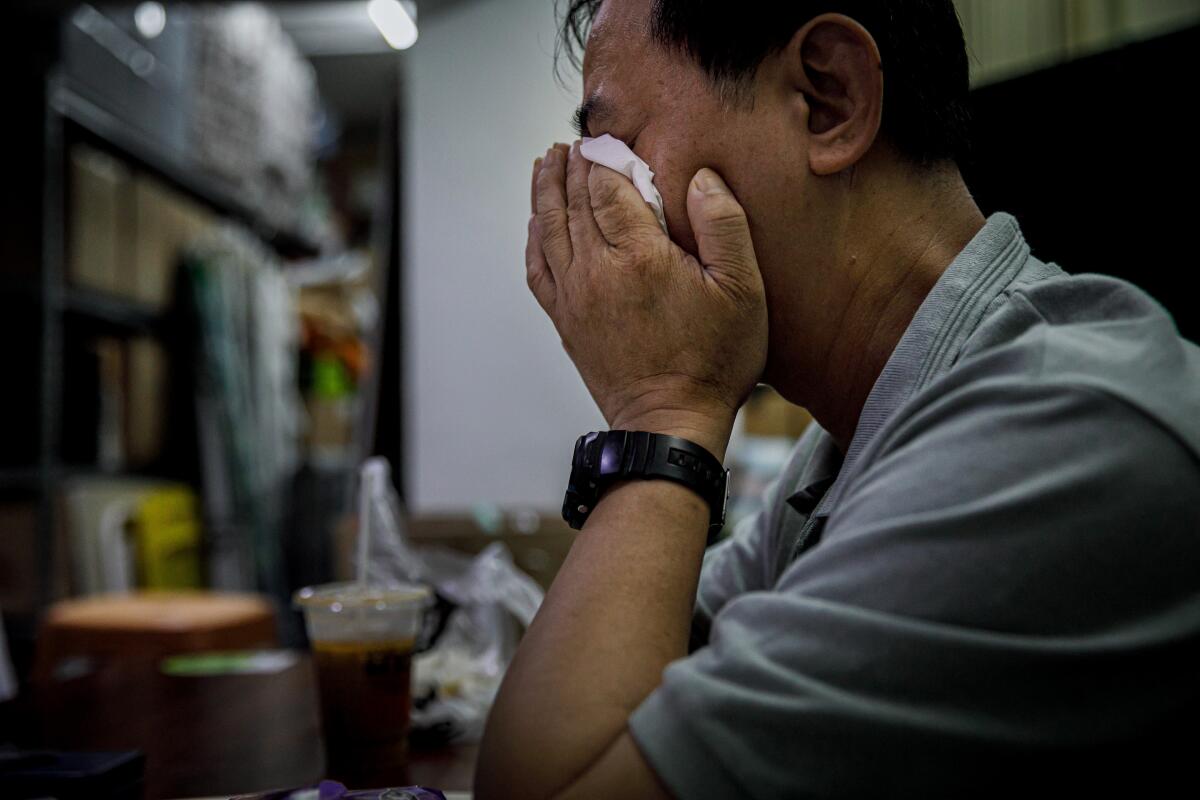
- Share via
HONG KONG — A crumpled tissue dampened with tears lies near Ng Chi Fai as he tells how a routine journey home on the Hong Kong subway landed him in a scene of terrifying chaos.
Business was slow for the chef Saturday night at the restaurant where he boils, steams and fries the Cantonese dishes his customers love. The 53-year-old, a cook since the age of 18, was fretting about getting home, scrolling through the news on his cellphone as protests broke out across the city. Demonstrators were defying a police ban, angered by the arrests of a group of pro-democracy activists.
So he decided to leave early, changed out of his chef’s shirt and hurried to the nearby Lai Chi Kok transit railway station.
A wave of irritation overcame him as he changed trains at Prince Edward station, where he found a platform crammed with an unusually large crowd for late Saturday night: mainly families with small children, older people, and young women dressed in fancy clothes for a night out. He squeezed onto a train with other passengers, including some protesters.
But the train didn’t leave. Announcements suddenly blared, telling people to get off the train and leave the station because there was an emergency.
Then all hell broke loose.
Ng wept silently, reliving his fear as he described police beatings of people — some of whom did not appear to be protesters - and others who were prone and not resisting.
“The way the police acted in the station that night, I really thought someone would die,” he said. “When they came down the steps, they just started hitting people. They didn’t look to see if you were a protester or not.”
Passengers had to jump aside as riot police from the Special Tactical Squad, locally known as raptors, hurtled in. Anyone wearing any black clothing, a color often worn by protesters, was suspect.
“Everything happened very quickly. They pointed their batons at people, yelling, ‘There’s a black shirt!’ ”
Ng saw police attack a young man in a blue shirt and jeans. “He was a young man age 24 or 25, not wearing protester’s clothes. When the raptors ran past us, they just hit him over the head with their batons. It was very chaotic. People were trying to get away.” Ng and others ran back onto the train, followed by riot police.
“They rushed toward the protesters, just pushing people aside like obstacles, using a lot of force. They pushed me over as they ran by and I fell onto a seat.” A train pulled in opposite, and people fled to it.
Ng saw police hit another young man in a white shirt on the head. Blood was pouring down his neck. “He just fell, and I didn’t see him move again.” They toppled another young man wearing black, beating him with batons and kicking him where he lay.
“The raptors followed us onto the other train. People were terrified. I saw a mother holding her two little daughters. They were all crying. I saw two young women who probably just came back from shopping or a night out because both were dressed in nice clothes. They were clinging to each other, huddled in a corner, crying. There were old people holding onto their shopping bags, shaking with fear.”
He saw police beat people trying to flee up the escalators in a crush that included older people and children.
“The way they used the baton was always hitting downward, and you can kill someone doing that. It made me feel very angry, but I did not know what I could do. I was frightened. The police were different that night, and in the train I felt terrified. I thought I was about to die.”
Waiting on the second train at Prince Edward station, Ng said police appeared to have fired tear gas in the next car.
He said riot police worked in teams: One beat the target on the head. A second pushed the person over. Several more jumped in, beating and kicking the target.
Video circulated on social media showed riot police pepper-spraying a cowering group of four, clubbing people with batons, spraying tear gas into a train car, pointing pepper-ball guns into trains full of people, wrestling young protesters to the ground and hitting them although they were not resisting. Volunteers offering first aid were denied permission to attend a person who had passed out.
Hong Kong, until recently a stable, thriving city, was once proud of a police force that called itself “Asia’s finest.” The harsh police actions — and the radical tactics of some frustrated protesters — have shocked many. Opinion polls by the University of Hong Kong in recent years have shown police approval ratings declining, with 28% of Hong Kongers unhappy with the police in early June, according to a university opinion poll — taken before the criticisms of recent police violence by human rights and pro-democracy groups.
Medical staff held protests Monday in several Hong Kong hospitals against Saturday’s police violence.
A Hong Kong doctor from a major city hospital was in Prince Edward station on his way home after finishing an extremely long shift. People were leaving the station peacefully until riot police rushed in and beat people, said the doctor, who gave his name only as Dr. J for fear of reprisals.
“I saw how badly people were attacked by the police. As a doctor, I wanted to go down to help them, but it was impossible.
“The riot police were just hitting anyone. They were aiming at the heads and the limbs, targeting anyone they could find at the bottom of the escalator. If I had been 5 meters [16 feet] farther back, I probably would have been one of the ones dragged down by the police because I happened to be wearing black.
“That moment I felt the actual fear of the police for the first time. You know that fear from the news, but when you are actually there, it arises from the deepest part of your heart, up to your head.”
He said he tried to help, but police ordered him to leave. Angry passengers leaving the station yelled out insults and obscenities at the police, he said, calling them gangsters and triads — Hong Kong gang members. Police responded by calling people cockroaches.
“It dramatically changed my view of the police. Before Saturday night, I’d say that police are good men until proven otherwise. But on Saturday night, not a single policeman was normal, inside or outside the station. Now I’d say police are gangsters until proven otherwise.”
Police have been criticized by human rights groups including Human Rights Watch and Amnesty International for excessive violence. They also angered many Hong Kongers for failing to respond swiftly on July 21 when dozens of men in white T-shirts attacked people with bamboo poles at Yuen Long station, making no arrests.
At one point, Ng tried to approach riot police beating a young man to take photographs as evidence, but police shouted at him to get back.
“I wanted to take photos to show people and tell people that this is the kind of police that we have.
“I’ve given up on the police since the Yuen Long attack on July 21. Every day they come out at 4 p.m. at the police press conference and lie blatantly to the Hong Kong people. I think it’s very scary.”
For police, the night was a triumph. They arrested 63 people, ages 13 to 36, at Prince Edward station and another station. If charged with rioting, as many demonstrators have been, they could face 10 years in jail.
In a sign of the anger over Saturday’s violence, hundreds of protesters gathered Monday and placed white flowers at Prince Edward station, then moved on to nearby Mong Kok Police Station, where they threw eggs at the building and shouted.
“Did you beat anyone to death?” one protester yelled.
Riot police chased them away, but a crowd of hundreds of protesters and angry residents surrounded the police and chased them back into the station shortly after 11 p.m. Police used tear gas, pepper spray and bean bag rounds against the protesters, arresting a number of people. Protesters, journalists and even police were caught when the tear gas was fired without warning.
Hong Kong Security Minister John Lee Ka-chiu Monday called the protesters “rioters” and said their violence was nearly out of control. He said a 13-year-old boy was arrested at Prince Edward station Saturday with two Molotov cocktails and that another batch of gasoline bombs was found at the station.
“The wanton attacks, beatings, bullying of passengers and the creation of terror by violent people are totally contrary to the so-called justice they claim to be seeking,” he said.
Chinese Foreign Ministry spokesman Geng Shuang said Monday that the protests had “evolved into extreme acts of violence, seriously challenging the legal system and social order of Hong Kong.”
The night after the incident at Prince Edward station, Ng said he woke with nightmares.
Before the violence, Dr. J said, passengers were chatting with protesters on the train, telling them they supported their actions and cracking jokes about the Hong Kong government. The doctor noticed a young protester clad in black who was also a first aid volunteer.
“He said, ‘I just want to offer my skills, to offer what I can.’ This was the first time I came across a protester directly. At that moment I felt his passion, his kindness, his sincerity. I felt so touched by these people, who could be staying home doing nothing. Why are they risking themselves?”
Despite his exhaustion after the long shift, he couldn’t sleep that night, as the violence replayed in his mind.
“I just lay on my bed and couldn’t sleep, thinking about those traumatic scenes. I thought about the person I had spoken to. I just can’t imagine what happened to him. They didn’t have time to get away.”
Dixon is a Times staff writer and Ho Kilpatrick is a special correspondent. Both reported from Hong Kong.
More to Read
Sign up for Essential California
The most important California stories and recommendations in your inbox every morning.
You may occasionally receive promotional content from the Los Angeles Times.
